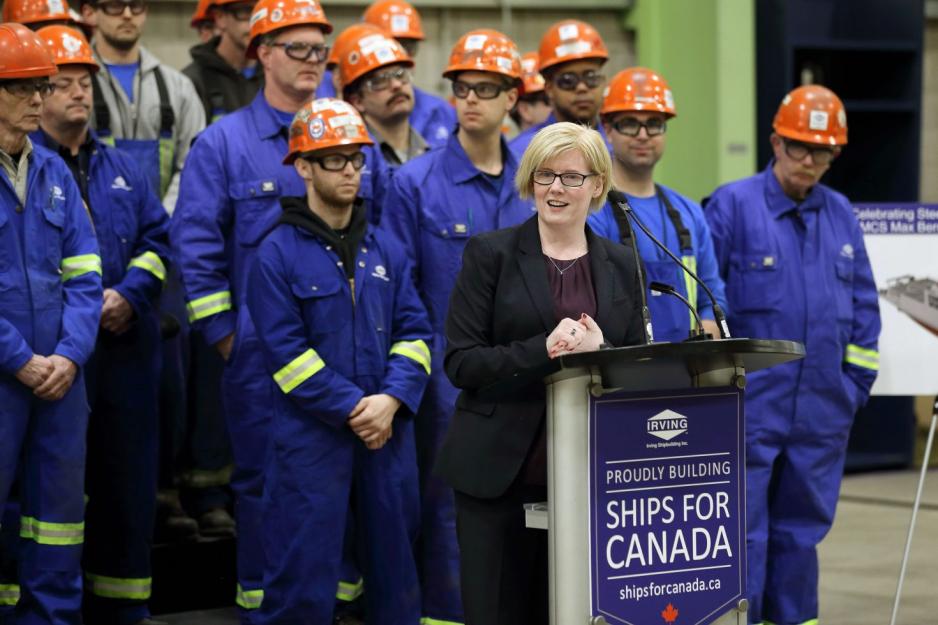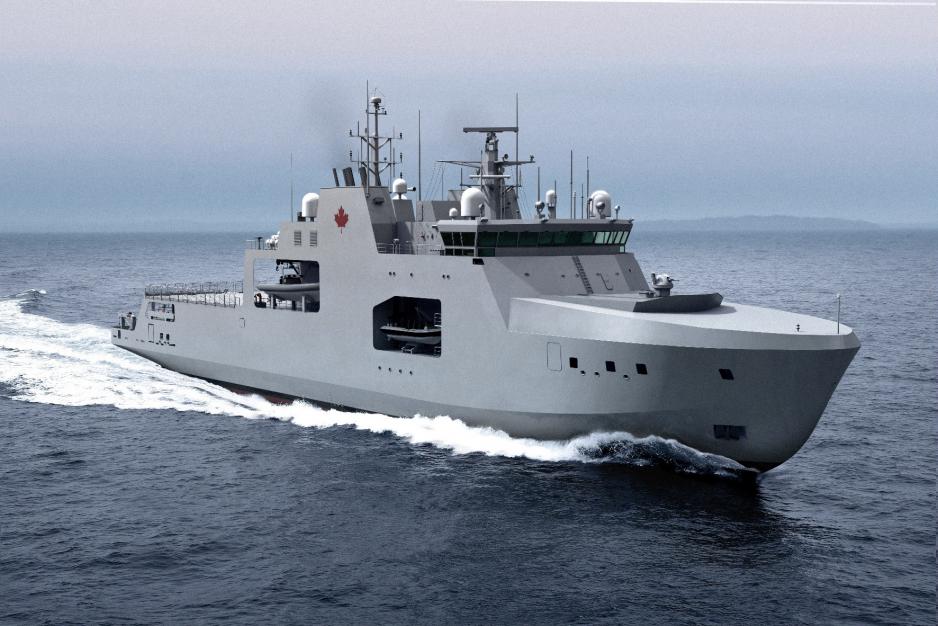First steel cut on Canada’s third Arctic and offshore patrol vessel

Carla Qualtrough, the Canadian Minister for Public Services and Procurement, cuts first steel on Canada’s third Arctic and offshore patrol ship
Early on the 19th of December, the Canadian Minister for Public Services and Procurement used a plasma cutting table to cut the first piece of steel destined to be part of Canada’s third Arctic and offshore patrol vessel. The vessel, Her Majesty’s Canadian Ship (HMCS) Max Leopold Bernays, is named after a Canadian naval hero who fought onboard the HMCS Assiniboine during the Battle of the Atlantic and received a medal for courage after surviving heavy fire during a German U-Boat attack.
Speaking from a media briefing at the Irving Shipyards in Halifax, Nova Scotia, the Minister highlighted the economic importance of the event.
“Today's steel cutting is an important milestone for Irving Shipbuilding, Canada and the National Shipbuilding Strategy. We are equipping our Navy and Coast Guard with the vessels they need, creating and sustaining jobs from coast-to-coast-to-coast, and re-invigorating a world-class shipbuilding industry here in Canada.”
This follows on the heels of an announcement earlier this year that Thales Canada, the Canadian subsidiary of the French defense conglomerate, would receive a $5.2 billion service contract for the vessels. According to parliamentary secretary Steve MacKinnon, this was also part of a concerted effort to rebuild Canada’s domestic shipbuilding industry.
A controversial history
This procurement process has drawn controversy since it was originally announced in 2007 that the government, then under the leadership of the Conservative Party, would purchase three to four icebreakers.
The first major scandal ensued when it was later announced that they would instead be purchasing seven to eight Arctic and offshore patrol vessels that, while capable of breaking through ice, would have a lower polar class of five—meaning that they would only be able to operate in medium-first year ice. The opposition New Democratic Party immediately labelled them “slush-breakers.”
Later, in 2013, the Rideau Institute and the Canadian Centre for Policy Alternatives released a 50-page report by Michael Byers and Stewart Webb that panned the procurement process. Instead of purchasing dual use ships that could be deployed in both Arctic and non-Arctic contexts, the report recommended that dedicated-use ships be built for the Arctic (icebreakers) and the Pacific and Atlantic oceans (patrol vessels).
The report’s authors also critique the militarized nature of the ship given that they see a majority of its Arctic duties falling to the civilian Coast Guard.
“Our underlying point is that in the absence of any threat that currently requires even a light gun, why are we building purpose-built Arctic vessels for the navy to essentially duplicate functions that could be fulfilled by the coast guard?"
Other academics, such as Rob Huebert, disagree and instead say that the ships should embody more in the way of combat capabilities.

Inspired by Norway
The Harry DeWolf-class Arctic and offshore patrol vessels are modelled off of the NoCGV Svalbard, an ice-strengthened ship primarily operated by the Norwegian Coast Guard in the Barents Sea and around the Svalbard Islands.
This comparison, in turn, drew further controversy due to the relatively high cost of the Canadian ships. While the procurement program had already been scaled back due to budgetary constraints, questions were raised as to why Canada was paying so much more than other nations for similar vessels.
The Canadian Broadcasting Corporation revealed that while the federal government of Canada paid $288 million to Irving Shipbuilding to design the Arctic and offshore patrol vessels, the Norwegian ship was designed and built for less than $100 million in 2002. This was after Ottawa had already paid $5 million to acquire the design of the Norwegian vessel.
Since the NoCGV Svalbard was built, the Danish have acquired two patrol vessels for $105 million in 2007 and the Irish built two for $125 million.
Increasing Canada’s Arctic capacity
Part of the National Shipbuilding Strategy launched in 2010 to replace the existing fleet in use by the Canadian Navy and Coast Guard, the Arctic and offshore patrol vessel program is pitched as a way to increase Canada’s surveillance capacity, situation awareness, and sovereignty enforcement in the Arctic.
The first vessel, the HMCS Harry DeWolf, began construction in 2015 and is scheduled for launch in 2018. The second, the HMCS Margaret Brooke, has approximately half of the ships 64 units completed with no fixed launch date yet available. There are currently five vessels planned with the option to purchase a sixth.
